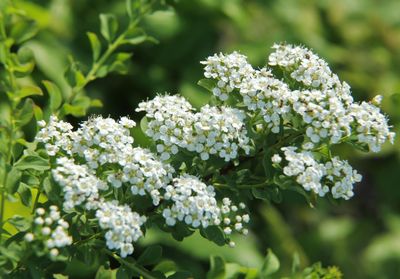Importance of Pruning Spirea
There are several reasons to trim your spirea regularly, at least twice a year. The first is to keep it healthy. A good trim helps get rid of dead branches and leaves and allows more sunlight in to the new growth that is struggling at the bottom or interior of the shrub. Trimming also gets more airflow between branches, which deters fungal infections and is a good way to restore health and vigor to an overgrown, neglected shrub. The other main reason to do regular spirea pruning is to keep your shrubs looking attractive. Without trimming these shrubs tend to look woody with dead branches and overgrown. The stems can start to look tangled and messy.
How to Prune Spirea
You should actually prune your spirea more than once a year, at least twice. Give it a good trim after it flowers in the spring by cutting back the tips of the stems to the top leaf bud. This removes the dead blossoms and also may trigger a second blooming and new leaf growth. You can also shape the shrub at this time. More drastically cutting back spirea should occur in the fall or in late winter to early spring. Remove any dead branches and use this trimming to shape the shrub. Cutting it way back will stimulate new growth in tighter clusters so that you can get a more rounded, compact shrub shape. A professional strategy for getting perfectly rounded spirea is easy enough for the home gardener. Tie a piece of rope around the center of the shrub. Trim straight across the top of the plant, and when you release the rope you’ll have a perfectly rounded spirea. The two main trimming periods, in early spring and after blooming, are most important to do each year, but you can also trim your spirea as needed throughout any season. This is a shrub that responds well to trimming, so prune and shape as needed.
